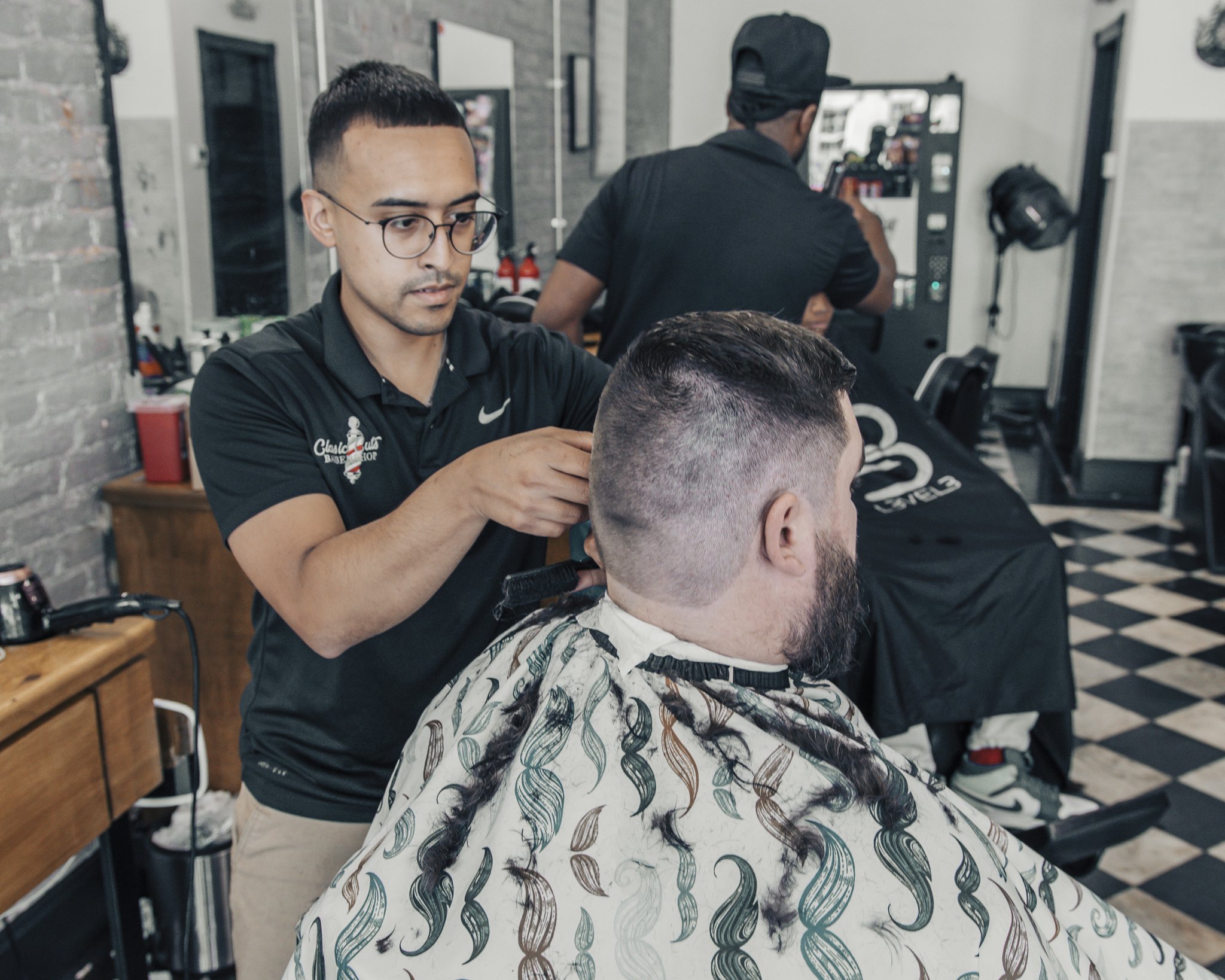Barbering Techniques: Mastering the Art of the Clipper and Shear
When you step into a barbershop, you witness more than just a haircut, it's a world where skilled hands and precise techniques come together to craft impeccable hairstyles. This time, we’ll dive into the technical side of barbering, exploring the artistry behind the world of clipping and trimming.
Tools and Equipment Used by Barbers: Firstly, behind every barber's skillful hands, there’s a range of specialized tools and equipment. Let's explore some of the essentials:
(Not THOSE Kind of Clippers 🙄)
Clippers: Electric hair clippers, equipped with various guard attachments, allow barbers to cut and fade hair to different lengths, creating precise styles.
Trimmers: Also known as edgers or detailers, trimmers are smaller clippers used for intricate work. Barbers rely on them to outline the hairline, shape sideburns, and clean up the neckline with precision.
Scissors: Professional hair-cutting scissors are the backbone of scissor cuts, layering, and detail work. They enable barbers to sculpt and shape the hair with meticulous precision.
Razors: Straight razors or safety razors play a vital role in shaving or creating clean and sharp lines, adding a touch of refinement to the haircut.
Comb: A barber comb with fine and wide teeth is an essential tool for sectioning the hair, parting it with precision, and executing accurate cuts.
Brushes: Various types of brushes, such as boar bristle brushes or vent brushes, aid in styling, detangling, and evenly distributing products throughout the hair.
Hair Dryer: A blow-dryer with adjustable heat and airflow settings is used to dry the hair, style it, and add volume and shape to the final look.
Barber Cape: A cape is worn by clients to protect their clothing from hair clippings, ensuring cleanliness during the haircut process.
Clipper Cuts vs. Scissor Cuts: Now, let's start with the basics. Clipper cuts and scissor cuts form the foundation of barbering, each with its unique purpose and results.
Clipper cuts involve the use of electric hair clippers, equipped with guard attachments of various lengths. This technique creates a uniform and precise length all over the head. It's commonly employed for shorter hairstyles, buzz cuts, and fades, giving a clean and sharp appearance.
On the other hand, scissor cuts showcase the artistry of barbers. Using professional hair-cutting scissors, they skillfully trim and shape the hair. Scissor cuts offer more versatility, allowing layered and textured looks, and are often favored for longer hairstyles, providing movement and dimension.
Barbering Techniques: You might not know, but there are some essential barbering techniques that elevate a haircut into a work of art.
Fades are a staple in modern men's hairstyles. They involve seamlessly blending the hair from a shorter length to a longer length, creating a smooth gradient effect. The fade technique includes various variations, such as high fade, low fade, skin fade, and taper fade. Barbers achieve these fades using clippers, transitioning from shorter guard attachments to longer ones. Scissor fades, on the other hand, involve meticulously blending the hair using scissor and comb techniques.
Tapers, another essential technique, focus on gradually decreasing the hair length from the top to the sides and back. This technique creates a polished and clean look. Barbers achieve tapers using clippers, starting with a longer guard attachment and gradually reducing the guard size. Scissor-over-comb techniques are also employed to masterfully taper the hair.
Layering is the art of creating texture, movement, and dimension within a hairstyle. It involves cutting the hair using scissors, razors, or specialized texturizing shears to execute this technique to different lengths, removing bulk, and adding shape, transforming a simple haircut into a visually captivating masterpiece.
Barbers, The Masters of Their Craft: Barbers are not just hair professionals; they are artisans who blend their expertise, techniques, and tools to create exceptional hairstyles. They carefully assess a client's hair type, desired look, and facial features, determining the best approach for the perfect haircut. With precision, artistry, and a deep understanding of their craft, barbers transform hair into a reflection of personal style and individuality.
So, whether you aspire to become a barber or simply appreciate the craftsmanship behind a great haircut, understanding these techniques and tools opens a window into the world of barbering, where skill, passion, and creativity intertwine to create remarkable works of art.
Next time you settle into the barber's chair, take a moment to appreciate the expertise and artistry at play — a testament to the barbershop's enduring legacy.

